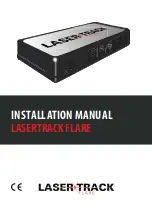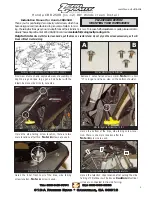
1. Basic Inroduction
Product User Manual
7
8
IV. Transportation requirements
1) During the transportation process, batteries should not be sun exposure and rained. The recommend state of charge during trans-
port is about 30%. Batteries should be stacked neatly, orderly, compactly and reasonably, safely and reliably. Always keep the
battery poles upward to prevent damage caused by shaking during transport ;
2) During the loading and unloading process of the battery, pay attention to move and put down lightly, throwing, rolling, crush,
mixing with other dangerous goods are prohibited ;
3) Minimize the number of transit transport; machinery operation should be used during shipping and handling to avoid the rough
handling operations. During the process of transport and use, overly strong impact and extrusion by external should be avoided,
to prevent battery casing broken or internal structure damage.
4) Recommend transportation environment is no higher than 60
℃
, humidity less than 90%.
IIV. Basic requirements for battery storage and maintenance
1) When customers receive the product, number of products, product specification must be checked. If the quantity or model is not
accurate or there are anomalies such as swelling, leaking, damaged housing and voltage anomalies, please contact sales
department to address in 15 working days after the receipt of product. Beyond this time limit, products will be successfully
received by default;
2) If batteries are not in use for a time, they are recommended to store in dry, clean and ventilated warehouse under the temperature
of -20 to 40 ,as shown in the figure 16. When the batteries are not use for a long time, pack and store the battery at 30% state
of charge;
3) Special battery drop zone shall be provided in the warehouse, on-flammable and explosive materials can be stored in this area,
batteries should be away from heat;
4) In general, stock battery should be stored in containers, batteries directly laid on the ground should be equipped with a layer of
insulating mulch under the battery, and a dust cover on them, while making warning signs;
5) Stock Battery should not be placed upside down, and be prevented from mechanical shock or stress, non-battery exposure and
rain;
6) Develop a tracking record of voltage, resistance for inventory batteries, check the stock battery voltage, resistance every three
months and make detailed records;
7) Conduct a full charge discharge test inventory every six months for inventory batteries at a charge and discharge rate of 0.3C,
and make detailed records.
3.1 Personal contact
If there is electrolyte leakage or smoke found, take aid measures:
1) Skin contact with the electrolyte: Removing attached clothing, washing with water carefully. Go for medical treatment in severe
cases.
3.2 Emergency treatment
1) When a conductor is simultaneously exposed to positive and negative terminals of the battery and introduce an external short
circuit, disconnect the system and the load circuit in the shortest possible time.
2) Occasion like a destructive impact may cause the battery to release the internal energy in an instant, resulting in safety valve
pressure relief and smoke, etc. At this time, extinguishing measures should taken to isolate from the air, such as masking sand,
carbon dioxide or dry powder extinguishers or others and disconnection the loop at the same time.
2) Eye contact with electrolyte: Flush immediately with plenty of water for at least 15 minutes, lifting the upper eyelid during flushing.
Go for medical treatment in severe cases.
4) Electrolyte Ingestion: Take 2 cups of milk or water orally. Do not induce vomiting unconsciously. Go for medical treatment in
severe cases.
3. Emergency treatment
There are lithium salt compounds, organic solvents, etc. inside the lithium-ion batter-
ies. When abusing or in extreme environments, dangerous situations including
leakage, smoking, overheating, and the safety valve opening((with black substance
spraying), fire may occur. To protect personnel’s safety and reduce economic losses,
you should take urgent protective measures in the event of danger, please read and
observe the following protective recommendations carefully:
3) Inhalation of smoke: when there is smoke, use protective measures (such as covering nose and mouth with a wet towel or wear
a professional gas mask) to prevent inhalation of fumes. As smoke and other harmful gases may cause damage to the respiratory
system, give oxygen if necessary. Go for medical treatment in severe cases.




























